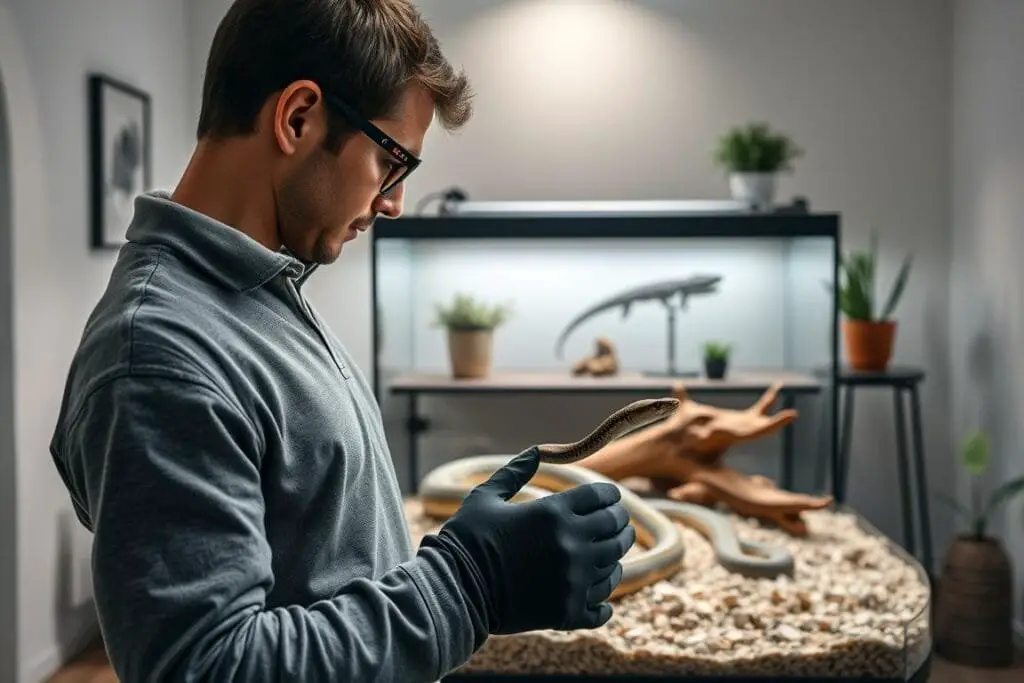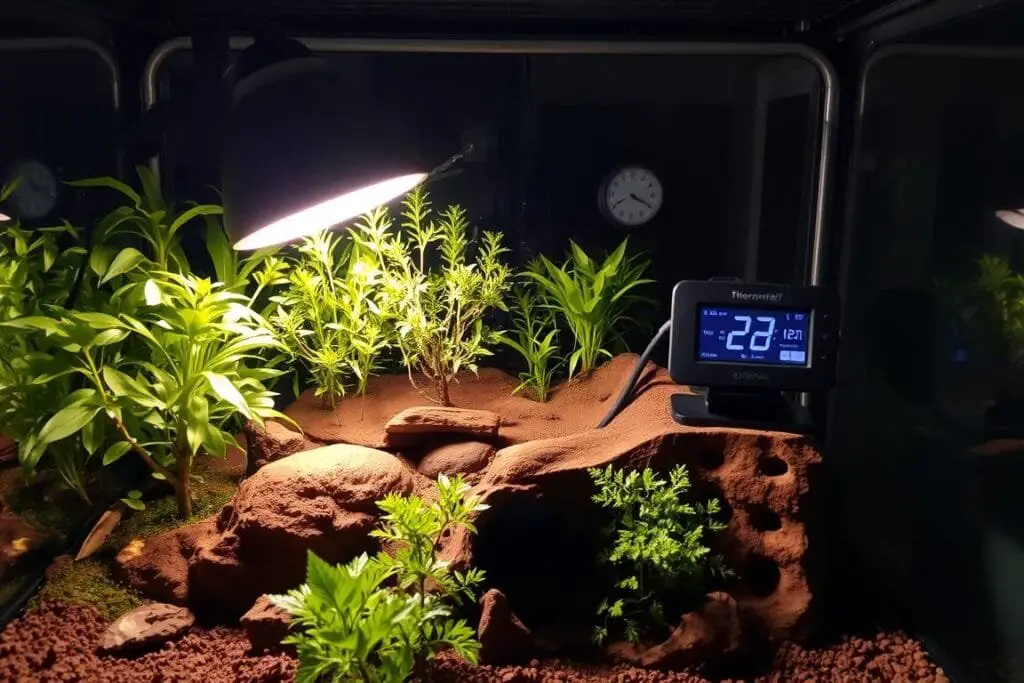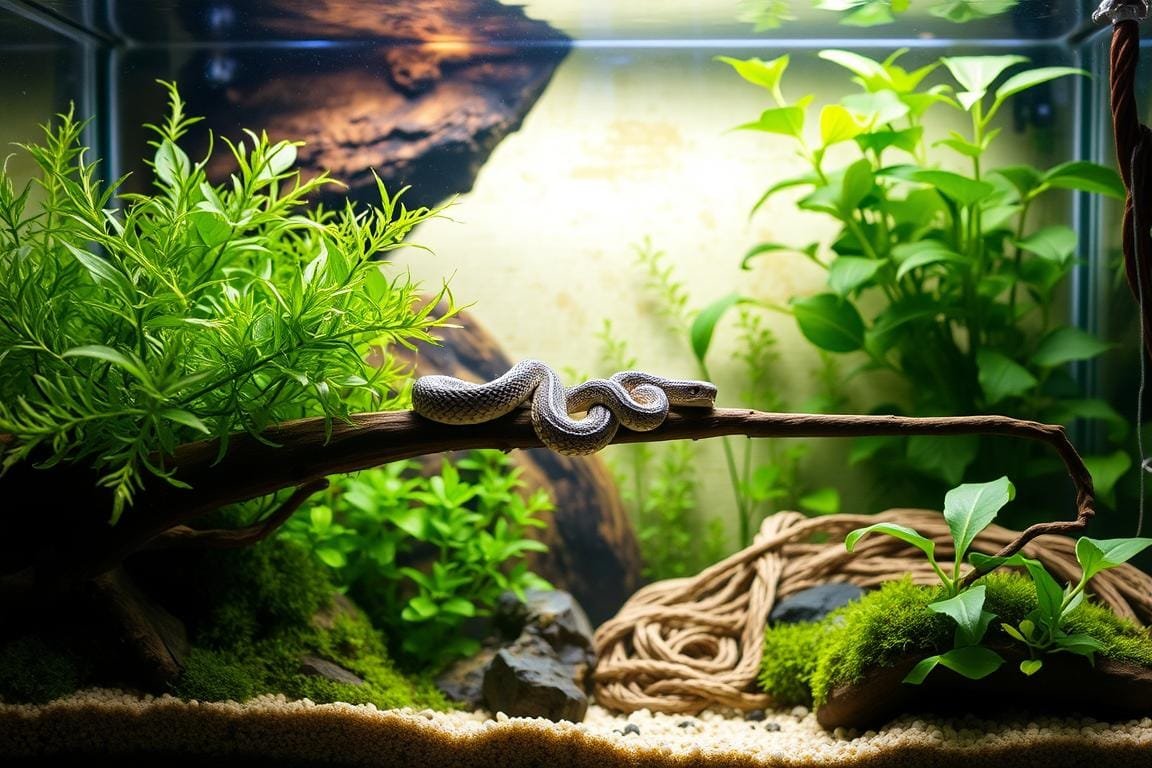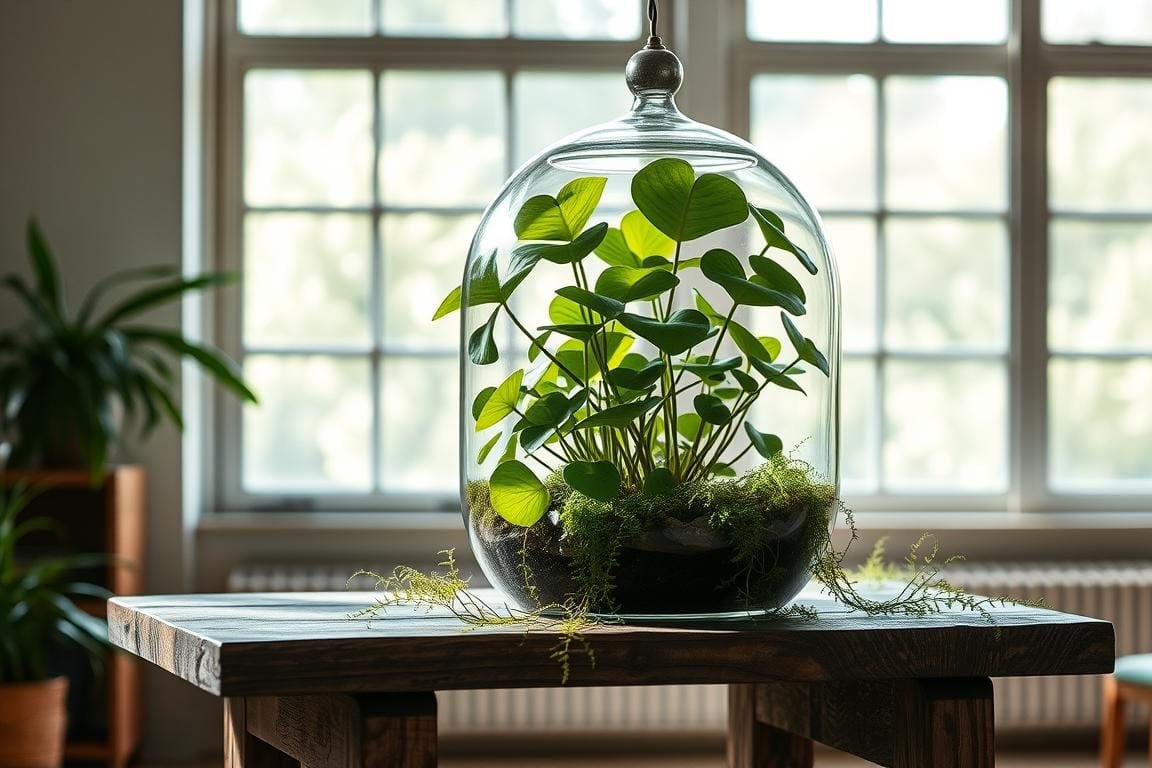Choosing the right reptile companion for a compact habitat doesn’t have to be overwhelming. Many urban pet owners and hobbyists are embracing miniature enclosures that fit seamlessly into apartments or smaller homes. But how do you balance a snake’s natural needs with limited space? Let’s explore!
Smaller habitats, like a 10-gallon setup, work best for species that thrive in cozy environments. Reptile enthusiasts on forums like sunsetsmiles and erie-herps often recommend corn snakes and western hognoses for their adaptability. These creatures don’t require sprawling territories, making them ideal for tighter spaces.
Blind snakes and thread snakes also earn praise for their modest size and low-maintenance habits. Their burrowing behavior pairs well with shallow sand substrates, creating a naturalistic environment without demanding extra room. Experts emphasize prioritizing temperature control and enrichment, even in smaller tanks.
This guide will walk you through top species, habitat design tips, and care routines tailored to compact enclosures. Whether you’re a first-time reptile parent or a seasoned keeper, discover how to create a thriving micro-habitat that keeps your scaly friend happy and healthy.
Understanding Small Enclosures: The 10 Gallon Tank Reality
Compact habitats offer surprising perks for modern pet owners. While limited in floor area, these setups shine in urban apartments or dorm rooms where space is precious. Let’s break down what makes them work—and where creativity comes into play.
Balancing Limits and Advantages
A 10-gallon enclosure isn’t just about saving room. It reduces cleaning time and costs, perfect for busy schedules. Reptile forums like sunsetsmiles highlight how owners manage humidity more easily in smaller tanks. One user noted, “Daily upkeep takes minutes instead of hours.”
But there’s a catch. Horizontal space restricts movement, so vertical design becomes key. Erie-herps members often share DIY projects using climbing branches or stacked hides. This approach lets pets explore upward, mimicking natural behaviors.
Horizontal vs. Vertical: A Smart Swap
When floor space is tight, think upward. Tall enclosures with ledges or foliage layers maximize every inch. For example, a college student redesigned their tank with a basking platform and hanging plants. Their corn snake thrived despite the compact size.
Smaller habitats also simplify temperature control. Heat mats and lamps cover the area evenly, reducing “hot spots.” Plus, monitoring your pet’s health becomes quicker—no searching through vast spaces during routine checks.
While not ideal for all species, these enclosures work beautifully for low-mobility reptiles. Just prioritize enrichment and safety to keep your scaled friend content in their cozy home.
Key Considerations Before Choosing Your Snake
Selecting a pet for limited-space habitats requires balancing practical needs with long-term care. While small enclosures simplify some tasks, species-specific requirements determine success. Let’s unpack the essentials to ensure your scaled companion thrives.
Habitat, Temperature, and Humidity Needs
Creating a stable environment starts with thermal gradients. Reptile enthusiasts like hsashton emphasize maintaining warm zones (85–90°F) and cooler areas (70–75°F). Species like Kenyan sand boas excel here—their desert origins mean they tolerate drier conditions. Smooth green snakes, however, need higher humidity (60–70%) and frequent misting.
| Species | Heat Requirements | Humidity | Notes |
|---|---|---|---|
| Kenyan Sand Boa | Low (85°F basking) | 30–40% | Burrows in sand substrate |
| Rough Smooth Green | Moderate (75–80°F) | 60–70% | Needs climbing foliage |
Budget and Veterinary Care Impacts
Initial costs for tanks, heating pads, and thermostats add up quickly. Sand boas often cost less to maintain due to their hardy nature. But all reptiles need vet checkups—parasite treatments or respiratory issues can surprise new owners. One Reddit user shared how their smooth green snake required a $200 specialist visit after a humidity mishap.
Plan for potential upgrades too. While sand boas thrive in 10-gallon setups lifelong, active species might outgrow compact spaces. Factor in these possibilities early to avoid stress—for both you and your pet!
Top Species for a 10 Gallon Tank
Finding scaled companions that flourish in cozy spaces requires matching their instincts to your setup. Let’s spotlight species praised for thriving in minimalist habitats while staying healthy and content.
Ideal Candidates: Small Size, Big Personality
Rosy boas top many lists for their calm demeanor. Reddit user ashleyraeanne notes, “Mine rarely exceeds 2 feet and stays active without demanding extra space.” Kenyan sand boas also shine—their burrowing habits align perfectly with shallow substrates. These little reptiles rarely need more than 6 inches of depth.
Rough green snakes add vibrant color to small habitats. Their slender build lets them navigate vertical plants easily. Just ensure humidity stays around 60% to mimic their forest-floor homes. Unlike leopard geckos, which some owners mistakenly house in tight spaces, these species truly adapt to compact living.
Balancing Strengths and Limitations
Every option has tradeoffs. Kenyan sand boas require minimal handling but need precise heat gradients. Rosy boas tolerate varied temps yet grow slightly larger. Here’s a quick comparison:
| Species | Temperament | Space Needs | User Insights |
|---|---|---|---|
| Rough Green | Shy | Vertical foliage | “Thrives with daily misting” – sunsetsmiles |
| Kenyan Sand | Docile | Shallow burrows | “Low-maintenance pick” – erie-herps |
| Rosy Boa | Curious | Moderate floor space | “Perfect for my studio apartment” – ashleyraeanne |
While leopard geckos sometimes get recommended, their need for horizontal roaming makes them less ideal. Prioritize species like the smooth green variety or ringneck snakes that naturally prefer confined spaces. Your little reptile will thank you!
snakes for 10 gallon tank: Selecting the Best Option

How do you pick a scaled companion that truly thrives in a compact home? Let’s break down the essentials using insights from reptile forums and expert keepers. Focus on three pillars: habitat adaptability, stress tolerance, and ease of care.
Start by evaluating substrate preferences. Rosy boas, for example, need loose aspen shavings to mimic their natural burrowing behavior. Kenyan sand boas require fine sand blends—but avoid dusty options that irritate their scales. One Reddit user shared how switching to a 70% sand/30% soil mix reduced shedding issues.
Water access matters too! Small dishes work for most species, but rough green snakes prefer droplets on leaves. Secure tank lids prevent escapes while allowing airflow. A sunsetsmiles forum member noted: “My juvenile rosy boa pushed open a flimsy mesh lid—upgrade to locking clips!”
- Prioritize low-maintenance animals: Species like sand boas thrive with weekly spot-cleaning
- Match heating needs to tank size: Compact habitats heat evenly, ideal for reptiles needing stable temps
- Observe behavior: Active climbers need vertical decor, while burrowers demand deeper substrate layers
Finally, consider long-term happiness. While some pets adapt to small spaces, others show stress through refused meals or glass-surfing. Test different setups—add moss hides or cork rounds—and watch how your scaled friend interacts. A little tweaking creates a cozy, thriving micro-habitat!
Detailed Species Reviews and Comparisons
Narrowing down your options for a compact reptile habitat? Let’s dive into firsthand experiences from seasoned keepers. We’ll compare popular boas and smaller species to help you make an informed choice.
Rosy Boas vs. Kenyan Sand Boas
Rosy boas charm owners with their relaxed personalities. Erie-herps member “DesertReptileFan” shares: “Mine curls up in cork rounds all day but explores calmly at night.” These reptiles grow up to 3 feet but adapt well to 10-gallon setups if provided horizontal hides.
Kenyan sand boas, however, prioritize burrowing over climbing. Sunsetsmiles users recommend 2–3 inches of sandy substrate for natural digging behavior. One keeper noted: “Males stay under 20 inches, making them perfect for minimalist habitats.” Both species thrive with under-tank heating but differ in activity levels—rosy boas are more visible during evening hours.
Rough Green vs. Ringneck Snakes
Rough green snakes bring vibrant energy to vertical setups. They need tall plants for climbing and humidity around 60%. A Reddit user mentioned: “Misting twice daily keeps mine active and hydrated.” These reptiles rarely exceed 2 feet and enjoy hunting small insects.
Ringneck snakes offer a quieter alternative. Their secretive nature means they’ll hide under leaf litter or flat rocks. Forum members highlight their low heat requirements (70–75°F) and preference for damp moss. While both species suit compact homes, rough greens demand more hands-on care.
- Activity patterns: Rosy boas explore at dusk; sand boas burrow daytime
- Feeding habits: Ringnecks eat earthworms, while rough greens prefer crickets
- Handling tolerance: Kenyan sand boas adapt best to occasional interaction
Tank Setup, Habitat, and Maintenance Tips

Crafting a cozy habitat starts with smart design choices. Whether housing a docile boa or active climbers, these strategies ensure your scaled companion thrives in limited space.
Heat Zones and Flooring Foundations
Start by positioning an under-tank heater (UTH) on one side. Reddit user rdurha1 suggests covering 30% of the enclosure floor for proper thermal gradients. Pair this with a thermostat to maintain 85–90°F on the warm end and 70°F on the cooler side.
Substrate matters! Kenyan sand boas thrive in meerkatlyndz’s recommended mix: 60% play sand and 40% coconut fiber. Aspen shavings work better for species like rosy boas. Avoid cedar—its oils cause respiratory problems.
Accessories That Earn Their Space
Compact habitats need multi-functional decor. Cork rounds serve as hides and climbing surfaces. Secure lids with childproof locks—forum members report fewer escape attempts with this $12 upgrade.
Budget-friendly tips: Use PVC pipes as tunnels ($3–$5) instead of pricey resin hides. Monitor humidity with affordable analog gauges. Remember—every inch counts when optimizing small enclosures!
Understanding Owner Experiences and Advice
Learning from those who’ve navigated reptile care in tight spaces offers invaluable lessons. Enthusiasts in dorms, RVs, and studio apartments share creative solutions—and hard-earned wisdom—for thriving in minimalist setups.
Real-World Insights From Reptile Enthusiasts
College student Taylor M. recalls her Kenyan sand boa thriving in a 10-gallon cage for three years. “Weekly spot-cleaning took 15 minutes,” she says. But when her setup’s heat mat failed during finals week, she learned to keep backup thermostats. RV dweller Jake R. emphasizes portability: “I use magnetic ledges to save floor space during moves.”
| Living Situation | Challenge | Solution | Key Tip |
|---|---|---|---|
| Dorm Rooms | Space restrictions | Vertical cork panels | “Double-check cage locks weekly” |
| RVs | Temperature swings | Insulated tank covers | “Monitor humidity with analog gauges” |
| Studio Apartments | Noise concerns | Silent UTH systems | “Choose species with low activity at night” |
Adapting Care Without Compromise
Adjust feeding routines to match your pet’s energy. One owner switched from mice to smaller prey every two weeks, reducing waste in compact cages. Others use shallow dishes clipped to walls to free up floor space.
Lizards often need more room, making smaller reptiles a smarter choice for tight quarters. Prioritize species that explore vertically—like rough green varieties—over horizontal roamers. As Reddit user TinyTankExpert advises: “If your setup feels cramped after three weeks, reassess enrichment rather than size.”
Final Thoughts on Small Snake Enclosures and Next Steps
Successfully maintaining a small reptile habitat hinges on balancing space efficiency with species-specific needs. While compact enclosures simplify cleaning and humidity control, they require strategic design to mimic natural behaviors. Choosing the right resident—like docile sand boas or vertical-climbing species—ensures both pet wellness and owner satisfaction.
Proactive planning prevents common pitfalls. Regularly assess your scaled companion’s activity levels and growth patterns. Some vivarium residents may eventually need larger homes, especially if showing signs of restlessness. Forum discussions highlight upgrading enclosures after 2–3 years for certain active reptiles.
New owners should prioritize monitoring tools—digital hygrometers help track humidity shifts in tight spaces. Pair this with weekly habitat audits: check substrate depth, climbing structure stability, and heat gradients. These small steps create a thriving micro-home that supports long-term health.
Finally, embrace continuous learning. Connect with reptile communities to exchange space-saving ideas tailored to your vivarium setup. Whether optimizing vertical layouts or testing new enrichment hacks, every adjustment brings you closer to mastering minimalist reptile care.





